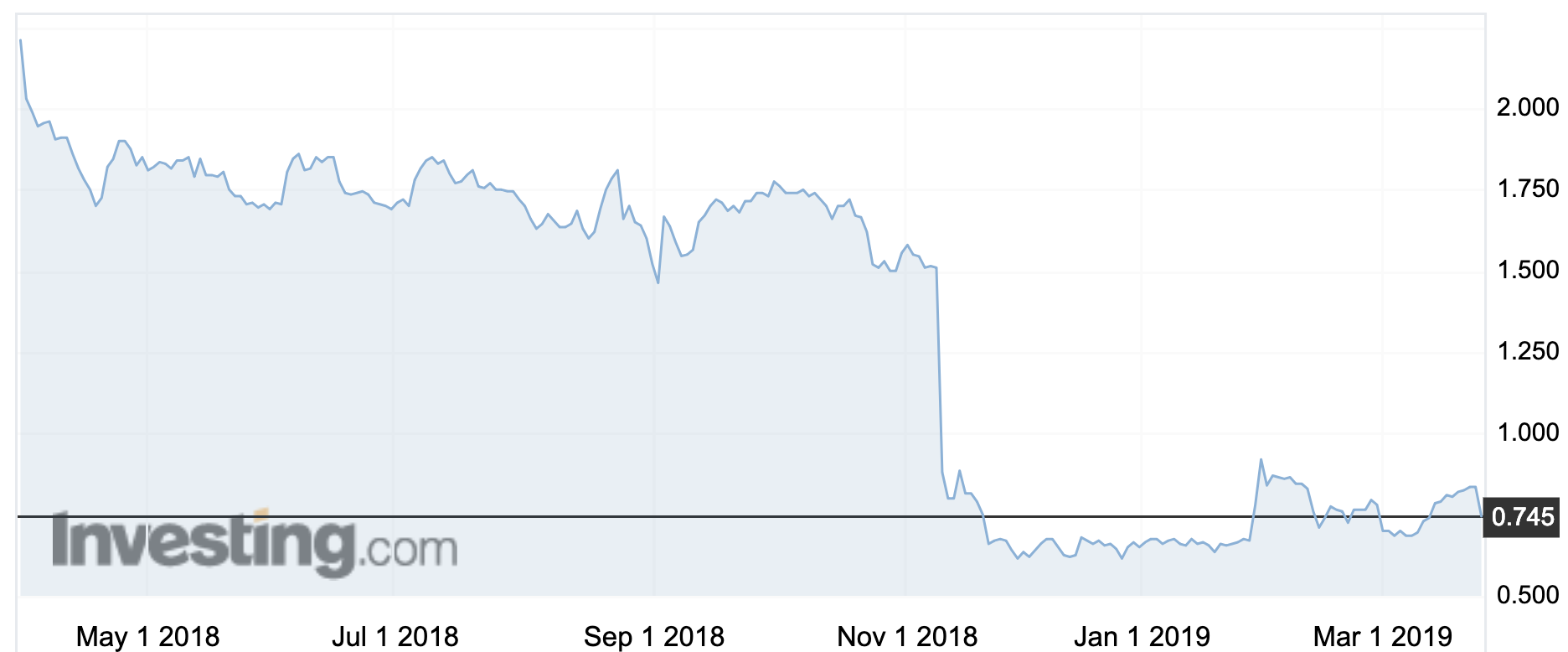Troubled Adacel’s CEO and chair gone by Sunday, investors run for exits
Tech
Tech
Adacel Technologies (ASX:ADA) has lost its CEO and chairman in one fell swoop, with both saying they’ll be packed up and out the door by Sunday.
Shocked investors are leaving too, pushing the stock down as much as 19 per cent to an intraday low of 68c. By the end of the day it’d recovered to 74.5c.
CEO Gary Pearson worked at the air traffic control training company for almost 19 years.
Chairman Peter Landos wants to go in order to spend more time COO’ing at Thorney Investment Group, billionaire Alex Waislitz’s private investment vehicle.
He told Stockhead Mr Pearson was leaving to try something new.
Mr Pearson was replaced by an executive committee until Adacel can find a permanent figure for the job, and Mr Landos by Los Angeles-based board member Michael McConnell.
The company’s stock took a massive 42 per cent hit on November 8 when it slashed full year profit by 25-35 per cent after losing a major US contract in late 2017.

“Whilst the performance in the first half has been impacted by the previously announced loss of the FAA Tower Simulation Support contract and related issues, the reduced full year forecast includes additional investment in research and development, sales and marketing capabilities as well as foreign exchange movements,” it said at the time.
The stock had been slowly falling since just before Adacel announced in November 2017 that the US Federal Aviation Administration (FAA) contract had been lost to rival Adsync Technologies.
The back Mr Landos said they found out on the morning of their 2017 AGM, and they protested the decision but it was denied.
Adsync had helped Adacel with database development. Mr Landos said they determined after an investigation that “perhaps they had breach our IP and used, stolen our IP as part of presenting themselves to the FAA”.
They launched a lawsuit in 2018 — it’s still in the early stages now — but they’ve pretty much filled the revenue gap left by the FAA contract.
“I would like to think that we can get it resolved. I’d like to think that you and I are still not talking about this in 12 months or two years time, because we don’t want to expend a lot of money on this scenario, and from a strategy [perspective].”
While the company has indeed filled the revenue gap — fiscal 2019 half year revenue came in 6 per cent less than the same period in 2018 at $25.8m — but profits are not looking healthy.
Profit almost halved to $1.95m in the six months to December 31.
The company had been hoping that a move into AI and voice activated cockpit controls might give it some lift.
Mr Landos said while revenue was solid, they installed a number of programs that had a lower margin and this flowed through into lower profit.
The other thing was the company is building up its ‘ATM’ or air traffic management arm in the small airfield space.
Fiji is an example of this sector, as it has a small land area and a small air space, which is perfect for a $5m-7m air traffic control system.
Mr Landos says large companies, such as Thales and Leidos, don’t look at that sized market — not when the former is spending $1bn-plus on Australia’s air traffic management program.